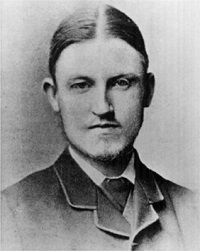Our credulity, though enormous, is not boundless; and our stock of it is quite used up by our mediums, clairvoyants, hand readers, slate writers, Christian Scientists, psycho-analysts, electronic vibration diviners, therapeutists of all schools registered and unregistered, astrologers, astronomers who tell us that the sun is nearly a hundred million miles away and that Betelgeuse is ten times as big as the whole universe, physicists who balance Betelgeuse by describing the incredible smallness of the atom, and a host of other marvel mongers whose credulity would have dissolved the Middle Ages in a roar of sceptical merriment. In the Middle Ages people believed that the earth was flat, for which they had at least the evidence of their senses: we believe it to be round, not because as many as one per cent of us could give the physical reasons for so quaint a belief, but because modern science has convinced us that nothing that is obvious is true, and that everything that is magical, improbable, extraordinary, gigantic, microscopic, heartless, or outrageous is scientific.
I must not, by the way, be taken as implying that the earth is flat, or that all or any of our amazing credulities are delusions or impostures. I am only defending my own age against the charge of being less imaginative than the Middle Ages. I affirm that the nineteenth century, and still more the twentieth, can knock the fifteenth into a cocked hat in point of susceptibility to marvels and miracles and saints and prophets and magicians and monsters and fairy tales of all kinds. The proportion of marvel to immediately credible statement in the latest edition of the Encyclopaedia Britannica is enormously greater than in the Bible. The medieval doctors of divinity who did not pretend to settle how many angels could dance on the point of a needle cut a very poor figure as far as romantic credulity is concerned beside the modern physicists who have settled to the billionth of a millimetre every movement and position in the dance of the electrons. Not for worlds would I question the precise accuracy of these calculations or the existence of electrons (whatever they may be). The fate of Joan is a warning to me against such heresy. But why the men who believe in electrons should regard themselves as less credulous than the men who believed in angels is not apparent to me. If they refuse to believe, with the Rouen assessors of 1431, that Joan was a witch, it is not because that explanation is too marvellous, but because it is not marvellous enough.
(Source: G. B. Shaw: Saint Joan. A chronicle play in six scenes and an epilogue. Leipzig, Bernhard Tauchnitz. pp 74—76.)
